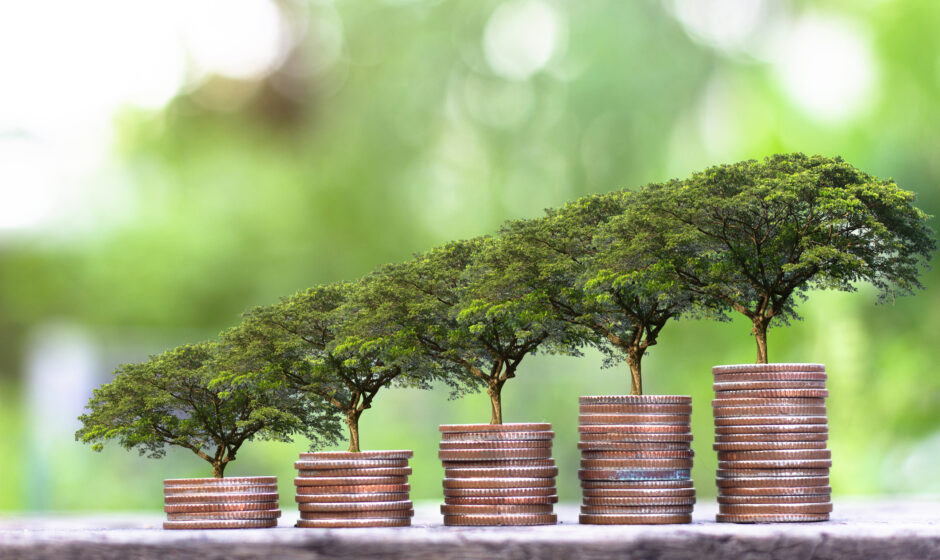In an era defined by climate change, resource depletion, and social responsibility, the financial world is undergoing a transformative shift. Green finance—a term encompassing investments that support environmentally sustainable initiatives—has emerged as a powerful force in redirecting capital toward a greener, more equitable future. From renewable energy projects to eco-friendly infrastructure, green finance is not just a trend; it’s a movement reshaping how we think about money, markets, and the planet. This blog explores the rise of green finance, its drivers, mechanisms, and its pivotal role in building a sustainable tomorrow.
What is Green Finance?
Green finance refers to financial products, services, and investments designed to promote environmental sustainability. It channels funds into projects that mitigate climate change, reduce pollution, conserve natural resources, or enhance biodiversity. Examples include:
- Green Bonds: Debt instruments funding renewable energy, energy efficiency, or clean transportation.
- Sustainable Loans: Credit facilities tied to environmental performance goals.
- Impact Investing: Equity investments in companies driving ecological benefits alongside financial returns.
Unlike traditional finance, green finance prioritizes long-term planetary health alongside profitability, aligning capital with global sustainability goals like the Paris Agreement and UN Sustainable Development Goals (SDGs).
Why Green Finance is on the Rise
- Climate Urgency
- With rising global temperatures, extreme weather events, and shrinking biodiversity, the need to fund climate solutions is undeniable. Green finance bridges the gap between ambition and action, with estimates suggesting a $100 trillion investment is needed by 2050 to achieve net-zero emissions.
- Regulatory Push
- Governments worldwide are incentivizing green investments. India’s Green Bond Framework (2023), the EU’s Sustainable Finance Taxonomy, and the U.S.’s Inflation Reduction Act are nudging financial institutions toward sustainability.
- Investor Demand
- Millennials and Gen Z, who will inherit the planet’s challenges, are driving demand for sustainable investments. Institutional investors, managing trillions, are also embedding ESG (Environmental, Social, Governance) criteria into portfolios.
- Corporate Accountability
- Companies face pressure from stakeholders to decarbonize operations and adopt sustainable practices. Green finance provides the capital to transition, from installing solar panels to retrofitting factories.
- Economic Opportunity
- The green economy is a job creator—think solar technicians, wind engineers, and sustainable agriculture experts. The International Finance Corporation (IFC) estimates $23 trillion in green investment opportunities in emerging markets by 2030.
Key Instruments of Green Finance
- Green Bonds
- Issued by governments, banks, or corporations, these bonds raise funds for specific eco-friendly projects. India’s green bond market crossed $20 billion by 2023, with issuers like NTPC and the Sovereign Green Bonds leading the charge.
- Climate Funds
- Dedicated funds, such as the Green Climate Fund (GCF), pool resources to support climate adaptation and mitigation in developing nations.
- Carbon Credits
- Companies offset emissions by purchasing credits from projects like reforestation or renewable energy, creating a market for sustainability.
- Sustainable ETFs and Mutual Funds
- These investment vehicles allow retail investors to back portfolios of green companies, democratizing access to sustainable finance.
- Green Loans and Mortgages
- Offered at favorable terms, these incentivize energy-efficient buildings or low-carbon technologies.
The Indian Context
India, with its ambitious climate goals—50% renewable energy by 2030 and net-zero by 2070—is a hotbed for green finance:
- Policy Support: The Reserve Bank of India (RBI) has included green bonds in its priority sector lending framework, while SEBI regulates ESG disclosures via the Business Responsibility and Sustainability Reporting (BRSR).
- Market Growth: India’s green bond issuances grew from $1.1 billion in 2015 to over $7 billion in 2022, fuelled by public and private sector players.
- Renewable Push: With 175 GW of renewable capacity targeted by 2030, green finance is funding solar parks, wind farms, and hydropower projects.
- Challenges: Limited awareness, high upfront costs, and a nascent taxonomy for green investments pose hurdles, but momentum is building.
Benefits of Green Finance
- Environmental Impact
- Funds flow to projects reducing greenhouse gases, preserving ecosystems, and combating pollution—think afforestation in Africa or electric buses in Asia.
- Financial Returns
- Green investments are proving profitable. Renewable energy stocks have outperformed fossil fuels, and green bonds often carry lower risk due to government backing.
- Social Good
- Beyond the environment, green finance supports jobs, health (via cleaner air), and equitable access to resources.
- Risk Mitigation
- Investing in sustainability reduces exposure to stranded assets (e.g., coal plants) as the world shifts to cleaner alternatives.
Challenges to Overcome
- Greenwashing: Mislabelling investments as “green” without tangible impact undermines trust. Robust standards and third-party audits are critical.
- High Initial Costs: Transitioning to green technologies can be expensive, deterring small businesses or developing nations.
- Data Gaps: Measuring and reporting environmental impact lacks consistency, complicating investment decisions.
- Scalability: While growing, green finance still represents a fraction of global capital markets, needing broader adoption.
The Road Ahead
The rise of green finance is unstoppable, but its full potential hinges on collaboration:
- Innovation: Digital tools like blockchain can track green fund usage, while AI can optimize investment decisions.
- Global Standards: Harmonizing definitions (e.g., via the International Sustainability Standards Board) will boost confidence.
- Public-Private Partnerships: Governments and corporations must co-invest in large-scale projects like smart grids or green hydrogen.
- Education: Raising awareness among retail investors and SMEs will widen participation.
By 2030, green finance could dominate capital markets, with projections estimating $50 trillion in sustainable investments annually. India, with its blend of policy ambition and market opportunity, is poised to lead in the Global South.
Conclusion
Green finance is more than an investment strategy—it’s a commitment to a sustainable future where economic growth and environmental stewardship coexist. From powering wind turbines in Gujarat to financing reforestation in Brazil, it’s redefining how capital shapes our world. For investors, it offers a chance to align wealth with values; for businesses, it’s a lifeline to thrive in a low-carbon economy; and for society, it’s a step toward resilience.
The rise of green finance signals a new era—one where profit meets purpose. Whether you’re an institutional fund manager or an individual saver, the message is clear: investing in sustainability isn’t just good for the planet; it’s good for the bottom line. Join the green revolution—because the future we fund today is the one we’ll live in tomorrow.



